Searched thru FAQ Bin-O-Facs and cannot find torque value for the four acorn nuts on the final drive/swing arm connection. Can one of you experienced Gen3 folks please let me know? Thanks.
You are using an out of date browser. It may not display this or other websites correctly.
You should upgrade or use an alternative browser.
You should upgrade or use an alternative browser.
Final Drive 4 Acorn Nuts-Torque
- Thread starter art miller
- Start date

Help Support Yamaha FJR Motorcycle Forum:
This site may earn a commission from merchant affiliate
links, including eBay, Amazon, and others.
senecahome
Well-known member
Not specific for Gen3 - but it seems this would be the same for all generations.Searched thru FAQ Bin-O-Facs and cannot find torque value for the four acorn nuts on the final drive/swing arm connection. Can one of you experienced Gen3 folks please let me know? Thanks.
According to this : https://www.fjr-tips.org/maint/spline/spline.html
should be 42 Nm (30 ft-lbs)
See item #9
RaYzerman19
Go Wings!
FSM says 30 ft. lbs., but that is the most I'd go on that size of stud..... also a good application for loctite.
JAB
Well-known member
30 FT-LB per Gen 3 shop manual. I'd recommend NOT using Loctite. You would have a heck of a time removing in the future and the shop manual doesn't call for it.
SouthernCruizer
Is it Beer:30 yet?
I'd forget the torque wrench on those...good and snug is the way to go.
mobilemike
Member
Usually on fasteners that small I will not get out the torque wrench. Snug with a 3/8 ratchet is good enough. Also you can feel free to use BLUE loctite.It is the lower strength and easier remove locker that still does the job.
MrZappo
Can we please go riding now ?
Just do what the engineers put in the shop manual. 30 and no locktite.
Seems reasonable to me and anything else is opinion.
I bet that the guys that designed it know what they are doing.
Seems reasonable to me and anything else is opinion.
I bet that the guys that designed it know what they are doing.
RaYzerman19
Go Wings!
Why loctite.......... we've discussed this before.
https://www.fjrforum.com/forum//index.php/topic/165174-startling-discovery/?hl=%2Bfinal+%2Bdrive+%2Bnuts
https://www.fjrforum.com/forum//index.php/topic/165174-startling-discovery/?hl=%2Bfinal+%2Bdrive+%2Bnuts
MrZappo
Can we please go riding now ?
Why loctite.......... we've discussed this before.<br />
<a href='https://www.fjrforum.com/forum//index.php/topic/165174-startling-discovery/?hl=%2Bfinal+%2Bdrive+%2Bnuts'>https://www.fjrforum.com/forum//index.php/topic/165174-startling-discovery/?hl=%2Bfinal+%2Bdrive+%2Bnuts
No kidding. The shop manual was not written for no reason. Follow it. You will be fine.
Last edited by a moderator:
I've pulled the swing arms off of 6 different FJR's for maintenance - pumpkin goes back on at 30 ft lbs, and no loctite - as per the factory specs.
But don't forget the washers when you re-assemble.
But don't forget the washers when you re-assemble.
mcatrophy
Privileged to ride a 2018 FJR1300AS
If you're going to use the manual specified torque, make sure the stud and the nut threads are thoroughly degreased so that they are as dry as when first assembled in the factory, which is what that value refers to.
Personally, I don't use a torque wrench, Just my patented "pinch test"
 .
.
(Click on image for larger view)
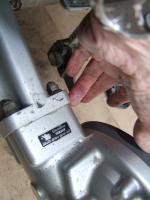
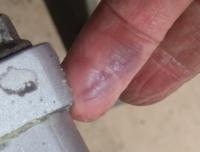
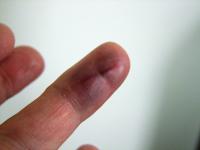
Personally, I don't use a torque wrench, Just my patented "pinch test"
(Click on image for larger view)



Hornet Pilot
Viper Pilot
Ouch!!! Been there done that!
HotRodZilla
GOD BLESS AMERICA
Dayum...I get that weird feeling in my stomach every time I see that picture. That had to hurt. Ouch!If you're going to use the manual specified torque, make sure the stud and the nut threads are thoroughly degreased so that they are as dry as when first assembled in the factory, which is what that value refers to.Personally, I don't use a torque wrench, Just my patented "pinch test" :mda: .(Click on image for larger view)


mcatrophy
Privileged to ride a 2018 FJR1300AS
Barely felt it....Dayum...I get that weird feeling in my stomach every time I see that picture. That had to hurt. Ouch!
You know what they say, no sense, no feeling
Actually a fairly minor injury by my standards. Most of my jobs end up blood-stained, usually with my own blood.
escapefjrtist
Searching for Dry Roads
Once the acorn nuts are removed, I wiggle the pumpkin to loosen the washers. They do like to roll...DAMHIK<snip> But don't forget the washers when you re-assemble.
--G
mobilemike
Member
There is no down side to using blue loctite. Use it if you want to. Dont if you dont.
Thanks guys for all the advice. I'll give it 30 lbs/ft and dry threads.
One more question if I may. While the final drive is out and the shaft removed, I would like to clean and lube the splines on the engine end of the unit. Do I have to remove the foot peg assembly to enable my pulling the U-joint. I removed the dust guard but could not figure how to remove the fastener that holds the other shield. It looks like a punch rivet but it does not release even with a good deal of pushing force. The diagram on the Forum thread seems to show it as a threaded fastener. There is no hex head or screw driver slot on mine. If any of you who have a Genlll removed that plastic please do tell. Did you have to remove the foot peg bracket in order to remove the plastic? Thanks for your usual good advice. Art
One more question if I may. While the final drive is out and the shaft removed, I would like to clean and lube the splines on the engine end of the unit. Do I have to remove the foot peg assembly to enable my pulling the U-joint. I removed the dust guard but could not figure how to remove the fastener that holds the other shield. It looks like a punch rivet but it does not release even with a good deal of pushing force. The diagram on the Forum thread seems to show it as a threaded fastener. There is no hex head or screw driver slot on mine. If any of you who have a Genlll removed that plastic please do tell. Did you have to remove the foot peg bracket in order to remove the plastic? Thanks for your usual good advice. Art
mcatrophy
Privileged to ride a 2018 FJR1300AS
Personally, I always lubricate threads before doing them up, and I've never used a torque wrench, I do them by feel. I can't remember the last time I had a problem with something that I'd done up being too loose and undoing itself, too tight and stripping a thread, or seizing due to corrosion.Thanks guys for all the advice. I'll give it 30 lbs/ft and dry threads....
Art
Of course, this doesn't apply to stretch bolts (typically used on cylinder heads and the like), where a torque wrench is essential. I've never done a cylinder head since my Tiger Cub days, when I didn't know what a torque wrench was, and the manual simply said "... finally tighten down the four sleeve nuts". I suppose it's the many, many hours of working on the Cub that helped teach me that "feel".
(click on image for larger view)
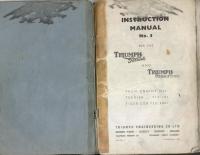 .
.
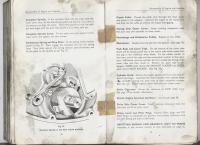
Last edited by a moderator:
Donal
Well-known member
If you go with lubricated threads (I always do), use about 60% of the recommended torque if you fell you have to use a torque wrench................
Similar threads
- Replies
- 2
- Views
- 628
- Replies
- 2
- Views
- 426
- Replies
- 1
- Views
- 796


